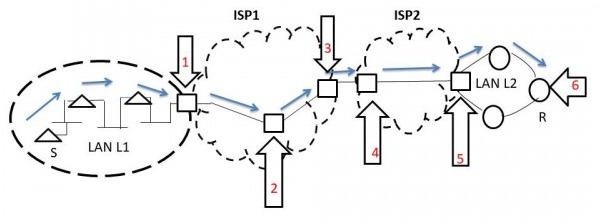Each time a packet visits network layer it decrements it's TTL field. Source initializes it and others decreaments it. Inside LAN it never goes to network layer, it is forwarded from data link layer itself.. in routers it goes upto network layer to make a routing decision.. and the router decrements it because the packet has visited the network layer.. and at the receiver too, the packet has visited the network layer and network layer will do it's job and decrements the TTL value.

There are $5$ routers, So Network Layer will be visited $5$ times and $1$ time on the destination
So, TTL $= 26$
PS:) A receiver decrements TTL value and then checks whether it is $0$ (or) not. So, $26$ is the answer (not $27$)